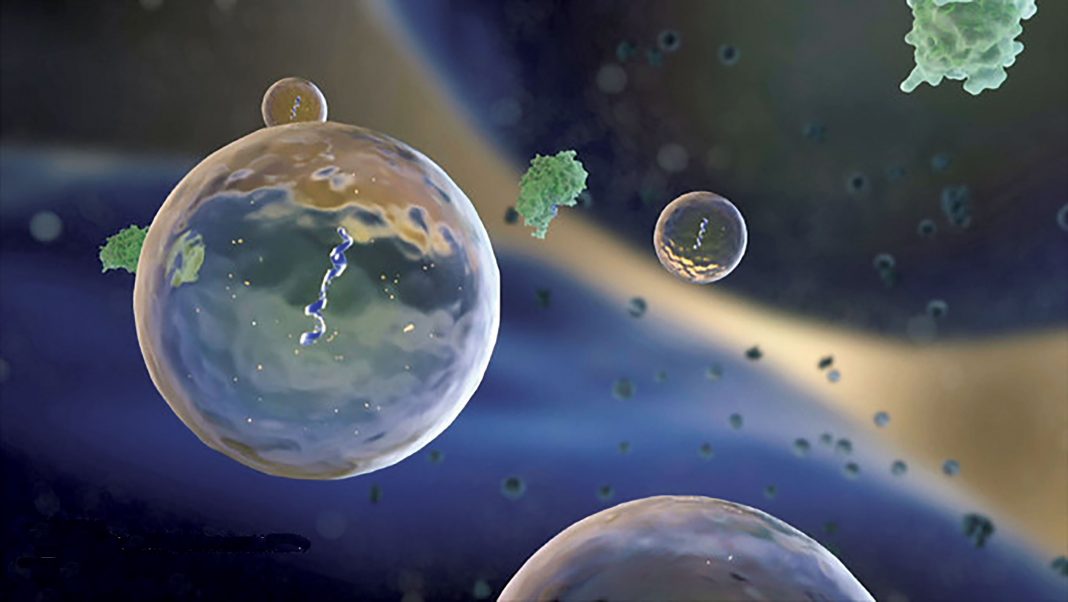
Marshall McLuhan’s famous saying—the medium is the message—was always meant to be taken as a general principal of communication. But even McLuhan might have been surprised to learn that his idea applies not only to human communication, but also to cell-to-cell messaging, specifically, the exchange of extracellular RNA (exRNA). According to Extracellular RNA Communication Consortium (ERCC), the exchange of exRNA may be understood by scientists only if they study both the message—the exRNA—and the medium—the extracellular vesicle in which exRNA is enclosed.
About 10 years ago, scientists became aware that RNA, the molecule that passes genetic information from the nucleus to the rest of the cell, also broadcasts genetic messages beyond the cell. ExRNA, scientists soon realized, could lead to the identification of disease biomarkers and therapeutic targets.
ExRNA, however, presented many challenges. For example, scientists needed to define the fundamental principles of exRNA biogenesis, distribution, uptake, and function, as well as the development of the molecular tools, technologies, and imaging modalities to facilitate the study of exRNA. To meet these and other challenges, the ERCC was launched in 2013. Since then, the ERCC has supported research resulting in 480 manuscripts, including 18 manuscripts presented last month by Cell Press.
“[ERCC researchers] encountered surprising complexity both in the types of carriers that transport exRNA molecules between cells and in the different types of exRNA molecules associated with the carriers,” an NIH press release stated. “The researchers had to be exceptionally creative in developing molecular and data-centric tools to begin making sense of the complexity, and they found that the type of carrier affected how exRNA messages were sent and received.” This last point emphasizes the importance of studying both the exRNA “letters” (the RNA molecules themselves) and the exRNA “envelopes.”
“Taken together, this work suggests that exRNAs are associated with diverse carriers, each with its own biogenesis pathway and characteristic exRNA cargo,” noted a Perspective article in Cell. “Several exRNA carriers have been described, but it is likely that others remain to be discovered. Even for known carriers, a comprehensive catalog of their molecular contents and a detailed delineation of the mechanisms underlying their biogenesis and cargo loading remain to be fully elaborated.”
Intercepting exRNA messages could expose disease mechanisms; changing or engineering designer exRNA messages could turn these mechanisms to advantage, promoting health. As the NIH has pointed out, ERCC researchers have identified potential exRNA biomarkers for nearly 30 diseases including cardiovascular disease, diseases of the brain and central nervous system, pregnancy complications, glaucoma, diabetes, autoimmune diseases, and multiple types of cancer.


